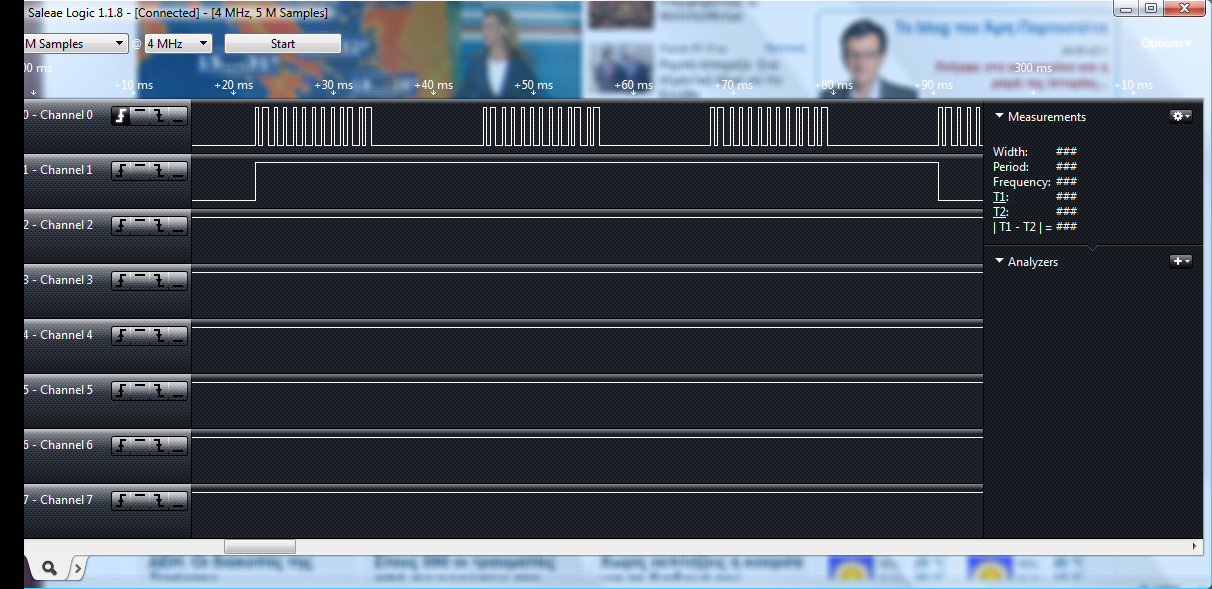Hi Jerson. No, it is not that the case. It just gets the first train of pulses but not the second one after the header of 11ms. It waits for a reason that I do not understand and gets the 4th train again. I try to get a shot from the Logic screen and post it next.
Here is the picture:

The first channel shows the data received from the Rx module.
The second shows every time the routine detects the header like this:
That delay is constant and not random. So it must be either a shortage ofthe lanquage or my mistake (possibly).Code:PULSIN DIN,0,NUMS IF NUMS > 8200 and NUMS<12000 then toggle portb.4 goto get_pulses else RETURN 'goto get_p endif
Ioannis






Bookmarks